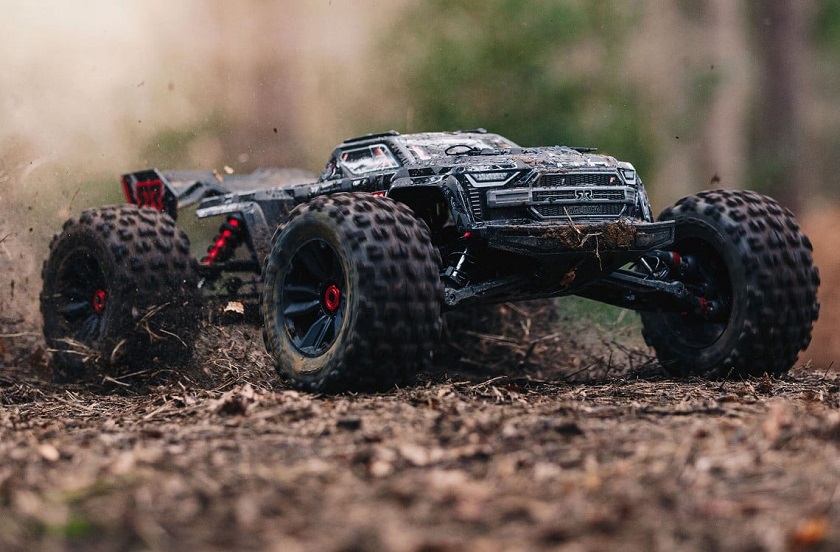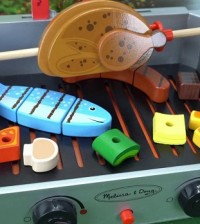RC Vehicles 101: How to Buy Your First RC Model
RC vehicles have come a long way from the department-store toys that you’d use for a few days before they broke down. Modern RC vehicles can break legal road speed limits and out-drive a Toyota. Oh, and they can be quite costly, too. This makes buying your first RC vehicle a minefield, of sorts. That being said, when browsing an online RC store, here’s a 101 guide on everything you need to know before you commit.
Electric vs Nitro
There are two types of motors used in RC vehicles – electric and nitro. Nitro motors feature miniature internal combustion engines, similar to those in motorbikes and lawn mowers, that generally use a special mix of methanol, oil and nitromethane. The mix can depend on the engine, and the engines require quite a bit of maintenance and servicing. That being said, get ready to get your hands dirty with a nitro engine.

However, nitro RC vehicles are much noisier and they can’t be used in some suburban areas. Booo! As a result, electric RCs are becoming much more popular, and they can be as fast, if not faster than their nitro counterparts. RC batteries can be quite costly, but if used and charged properly, they’ll last quite a while.
When browsing an online RC store, you’ll notice that electric RCs come with either brushed or brushless motors. The brushes are the small carbon blocks featured in the motors. Without getting too much into it, brushless motors are faster and overall better, so if your budget allows for a brushless RC vehicle, get one.
Batteries
So you’re getting an electric-powered RC vehicle. The most important factor to consider in electric RCs is the battery they use. The cheapest batteries generally use nickel-metal hydride construction, and they typically cost about $50 or less. Like all batteries, they can degrade over time, but they last long.

If you have money to spend, however, consider LiPo batteries. Lithium-polymer batteries are lighter and hold more energy, which is measured in mAh. The more mAh a battery has – the better. However, capacity doesn’t equal power. Power is represented in voltage. More voltage makes the motor spin faster.
LiPo batteries can have up to 3.7V and the most common types are 2-cell and 3-cell batteries. While there are 7-cell batteries, they’re less common and more expensive. That being said, 2-cell batteries have 7.4V and 3-cell batteries have 11.1V. You also need to pay attention to the C-rating of the battery, which determines how quickly you can safely discharge them. The higher the C-rating, the faster the discharge rate.
If this is too much to digest, just get an RC vehicle that comes with a battery. If you want a spare battery, get a battery with the same voltage and cells, as well as the same C-rating. You can go up the C-rating when choosing a spare battery, but not down.

Batteries also come with various charge and discharge plugs. Most chargers feature the popular plugs, but the discharge plug can be specific to your RC vehicle, which can be specific to the RC brand. For instance, Traxxas, one of the most popular brands, have their own plug type.
Some stores allow you to choose the plug yourself, and if you’re handy you can swap it yourself. One of the most popular discharge plugs is the Dean’s plug. Last but not least, make sure the dimensions of the battery you want to buy fit the battery slot of the RC vehicle.
Type of RC Vehicle
RC vehicles are categorised by their body type and what they’re designed to do. Just like the real vehicle market, the RC market offers a broad selection. The first thing you need to consider is whether you want to go off-road or stick to the pavement. Most beginners go for off-road RC vehicles, as they can use them on various terrain. On-road vehicles, however, go faster, especially around corners. On-road RCs can also be drift machines that slide around and perform amazing drifts.

As far as off-road RCs go, you can choose between buggies, monster trucks and short-course trucks. A lot of the parts are similar, such as the frame of the vehicle, the motor or the parts inside the suspension, but they can have different characteristics. Monster and stadium trucks, for instance, have larger tyres, making them less susceptible to rolling. Buggies, on the other hand, have a lower centre of gravity, making them better for racing on dirt.
There are also crossovers, such as truggies, which combine a buggie and monster truck. You can also get a rock crawler, which does what its name implies it does. These RCs are very capable off-road, as they have great suspension travel and superior 4WD hardware. Crawlers are also suitable for beginners who don’t need a fast-going RC, but something they can drive virtually anywhere.










